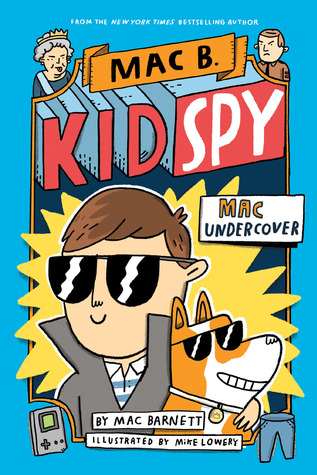Time to get ready for the weekend!
Kick up your feet and find a good place to read.
Sharing #booklove for your classroom or library.
Spotlighting a book or two because these books deserve the spotlight!
Melissa Stewart is an author whose books I immediately look to when I'm looking for a nonfiction picture book mentor text. Whether it's something I want to point out as a writing craft move, learn something about the world around us or show kids that nonfiction books are amazing, it's Melissa I go to. If I'm looking for information about nonfiction texts in general or writing nonfiction, it's Melissa's blog site I go to. She is a trusted and valued resource for me and one I recommend all teachers to search and find.
Her newest book, Pipsqueaks, Slowpokes, and Stinkers: Celebrating Animal Underdogs is one I'll be sharing for a long time.

Pipsqueaks, Slowpokes, and Stinkers
written by Melissa Stewart
illustrated by Stephanie Laberis
published by Peachtree Publishers
September 1st
Goodreads summary:
Puny? Poky? Clumsy? Shy? A lighthearted look at the surprising traits that help some animals survive.
Written with a lively, playful voice, Pipsqueaks, Slowpokes, and Stinkers introduces young readers to a variety of "animal underdogs" and explains how characteristics that might seem like weaknesses are critical for finding food and staying safe in an eat-or-be-eaten world.
Award-winning author Melissa Stewart offers readers a humorous and informative nonfiction picture book with a gentle message of understanding and celebrating differences. Stephanie Laberis's bright, bold--and scientifically accurate--illustrations add to the fun.
My review:
I love the perspective Stewart takes with this book - she says on the first page that this book is not looking at the animals we admire, like elephants and cheetahs. Nope, this book is looking at those animal underdogs. Specifically, we'll be looking at animals whose traits include being really small, being some of the slowest animals around, and being downright stinky! I love this layout that shows the "stinky" animals getting some of the most powerful animals to hightail it away from them!
Melissa Stewart's books have always been so popular in my library. Kids love them because they are entertaining - they pour over the facts and the information. In this book, Stewart's words are matched with Stephanie Laberis' illustrations. So after readers pour over the information, you'll see them lingering over the fantastic artwork in this book.
I never leave Stewart's books without thinking about the many ways I can use them. They are mentor texts in several different areas of the curriculum. Below I list ways to use this book across your curriculum, but first take a look at this layout. Notice the way Stewart uses questioning to introduce the animal and how we see how this animal's quirk is actually a helpful adaptation for the animal. See, so much to look and learn and talk about with this book!
Science mentor text:
- this book is perfect if you're looking at animal adaptations! Look for the animals that use their "underdog" quality to survive, for protection, to get food, or because of how their animal body was made!
- Don't miss the backmatter to find more information about how these qualities help the animal adapt to their environment.
Reading/Writing mentor text:
- Take a look at Stewart's introductions - notice how the lead sentence is in the form of a question? How does this grab the reader?
- If you don't already know, Melissa Stewart is the MASTER at using text structures in her writing so it makes the most sense for readers. Be sure to check out her website and check out these posts. Share the text with students - what text structure do they notice? Why do you think Stewart used this text structure to organize her book?
- Calling an animal a stinker or a pipsqueak may not sound very nice, but Stewart always backs up her claim with multiple reasonings. Notice those details, do they prove the animals' underdog status?
SEL mentor text:
- Notice how Stewart picks out the positive parts of the "underdogs". Talk about how all of us have unique qualities and it's the perspective we use when thinking about those qualities.
- Talk about this sentence from the end of the book, "What seems like a weakness could actually be a strength." How can we show this in our school/class community?
And checking out this book trailer is a MUST! Thanks for sharing your class with us, Lesley Burnap (@LBurnap90).
More about Melissa Stewart:
Melissa Stewart is the award-winning author of more than 180 science books for children, some of which have received the Outstanding Science Trade Books Award for Students K–12 from the National Science Teachers Association. She earned degrees from Union College and New York University and worked as an editor. She lives in Massachusetts. You can visit her website at www.melissa-stewart.com.
I hope you add this book to your library and find many ways to use it and share it this year!
Melissa Stewart is the award-winning author of more than 180 science books for children, some of which have received the Outstanding Science Trade Books Award for Students K–12 from the National Science Teachers Association. She earned degrees from Union College and New York University and worked as an editor. She lives in Massachusetts. You can visit her website at www.melissa-stewart.com.
I hope you add this book to your library and find many ways to use it and share it this year!














































